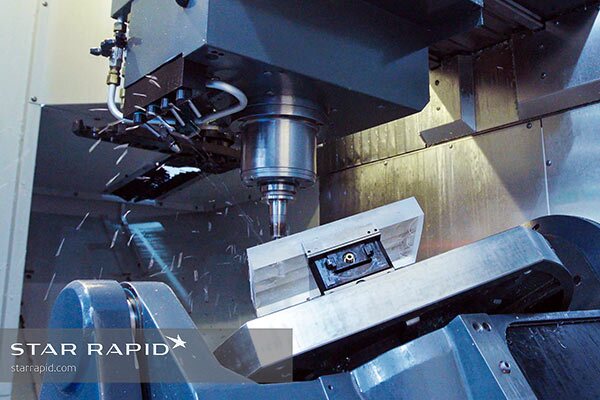
CNC machining for rapid prototyping allows you to leverage the many advantages of computerized equipment to produce fast-turnaround prototypes, engineering models and high-quality end-use parts in the least possible time. Here are the top five reasons to consider CNC machining for your next rapid prototyping project.
1. CNC Machining is Fast
CNC machining for mass production began in the 1970s, and as machines and software applications have improved it is now one of the fastest and most reliable ways to make complex shapes in metal and rigid plastics.
This speed applies to both set-up and processing time. First, using modern CAD/CAM design software, a three-dimensional part can be translated into a G-code cutting program and then transferred to a multi-axis mill in a matter of hours.
Once programmed, a good mill or lathe can whip through steel or aluminum with astonishing speed, turning a raw blank of metal into a finished part in minutes.
2. CNC Machining Requires no Fixed Tooling
Some manufacturing processes such as plastic injection molding or pressure die casting require using rigid dies made of hardened or semi-hardened steel alloys. Making these tools can often take several weeks, depending on their level of complexity. Even vacuum casting uses silicone molds which can take a few days to prepare. This is of course entirely worth doing for many projects, especially when reproducing subtle surface textures copied from a master pattern. But that can be a limiting factor on other jobs, where CNC machining makes a smoother and flatter surface for engineered parts.
The only tools used for CNC milling and turning are the hardened metal cutting inserts used in the spindles. Different shapes and types of cutting inserts perform various cutting functions on the workpiece, but when arranged properly on an automatic turntable these tools can be swapped out and exchanged in seconds.

3. CNC Machining is Accurate
In the modern machine shop there is no conventional way to achieve higher levels of accuracy and precision than with computer-controlled cutting tools. This level of accuracy routinely produces tolerances of +0.05mm or 50 microns. This is more than accurate enough for the vast majority of commercial applications. And this is a repeatable tolerance, easily achieved again and again, over production runs of unlimited part numbers.
Tighter tolerances than this, such as may be required for very demanding aerospace, automotive or scientific applications, can be achieved using special cutting tools under controlled conditions.
4. CNC Machining is Easy to Modify
It is easy to make modifications to a design very quickly by simply altering a few lines of the G-code program. This is especially attractive for prototyping, allowing you the chance to test several different iterations and immediately assess the results. Tweaking a program and making refined adjustments “on the fly” can greatly reduce total product development lead times without adding any extra cost.
5. CNC Machining Works with Many Materials
CNC machines are indifferent to what they are cutting, so long as the material is rigid enough not to deform or melt under the pressure of the cutting action. This can also help in product development or when you want to make several similar prototypes with slightly different mechanical or cosmetic properties. The same design can be made in rigid plastic, aluminum or steel, for example, with only minimal adjustments made to the speed and feed of the tool doing the cutting.

We’ve made millions of parts and rapid prototypes over the years, and CNC machining has been a big part of our success. Find out how it can help you too when you upload your digital CAD files for a free quotation.
Tagged:







